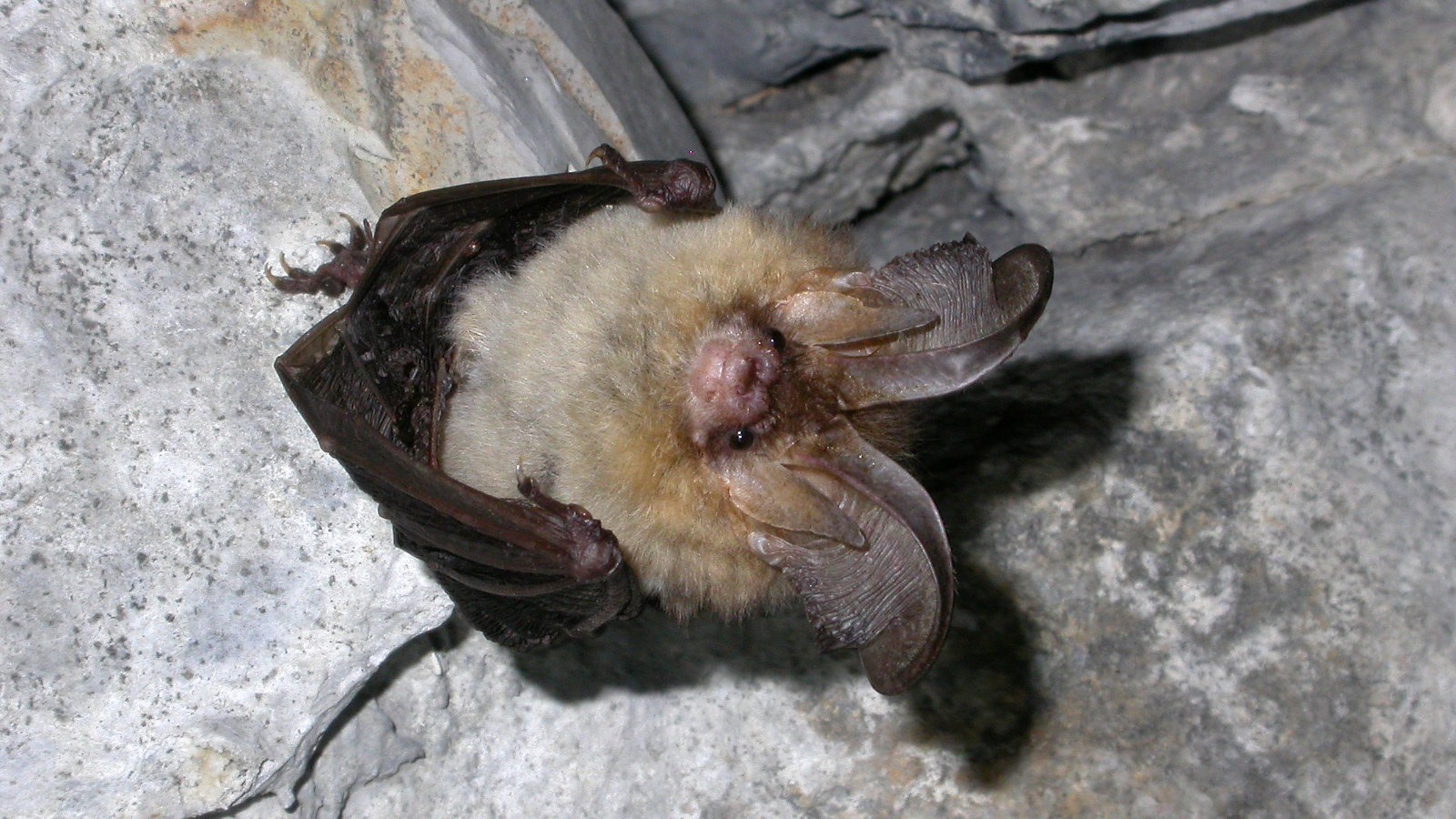Brown long eared bats (BLEs) are larger than the common pipistrelle and can weigh up to twice as much. Their wings span up to 28cm (that’s almost as long as a ruler) and their body is slightly longer than your thumb.
If the common pipistrelle is a jet, then the brown long eared bat is more like a jumbo of the bat world. With a slow ambling flight pattern, they flutter quietly along creeping up on their food unawares.
BLEs have larger eyes than other bats because they sometimes pick their food off leaves and branches with their feet, so they need to be able to distinguish their insect food from the leaf it is sitting on!
Overview
The brown long eared bat is common throughout Britain and love roosting in old buildings.
They come out a little later at night than the pipistrelle and can be distinguished from other bats by their larger size and obvious long ears when seen in flight.
BLEs are most likely to be found around woodland and trees where their favourite food lurks.
They specialise in eating moths, hence the long ears. Some moths can hear bats when they echolocate and so avoid being eaten, but the brown long eared bat is clever and makes very quiet sounds so that the moths can’t hear them. Because of this they need to have bigger ears to be able to hear the echoes.
You can usually tell if you have brown long eared bats roosting in your attic by the presence of a small mountain of moth wings where they have pulled them off whilst eating!
In the Garden
Because they are so very quiet you are more likely to see than hear a brown long eared bat.
Planting trees, shrubs and pale night scented flowers that are especially attractive to moths will encourage BLEs to your garden.
You can also help by providing roost sites – these can be natural (trees or houses) or man made (bat boxes). For bat boxes to be effective you need to put up several in one spot. Bats are very fussy and will not just move into any old place, they need to get some warmth from the sun during the day and be dry.
BLEs are more likely to use bat boxes than pipistrelles. They have suffered greatly because of the loss of old buildings and barns being converted.
It can take years for any bat to set up home in a bat box so don’t be upset if they aren’t used straight away. Occasionally boxes will show signs of being used almost immediately, particularly in an area where a favourite roosting site has just been lost.
Did you know?
Brown long eared bats roll up their ears when roosting to keep in the warmth and stop their ears from being damaged.
